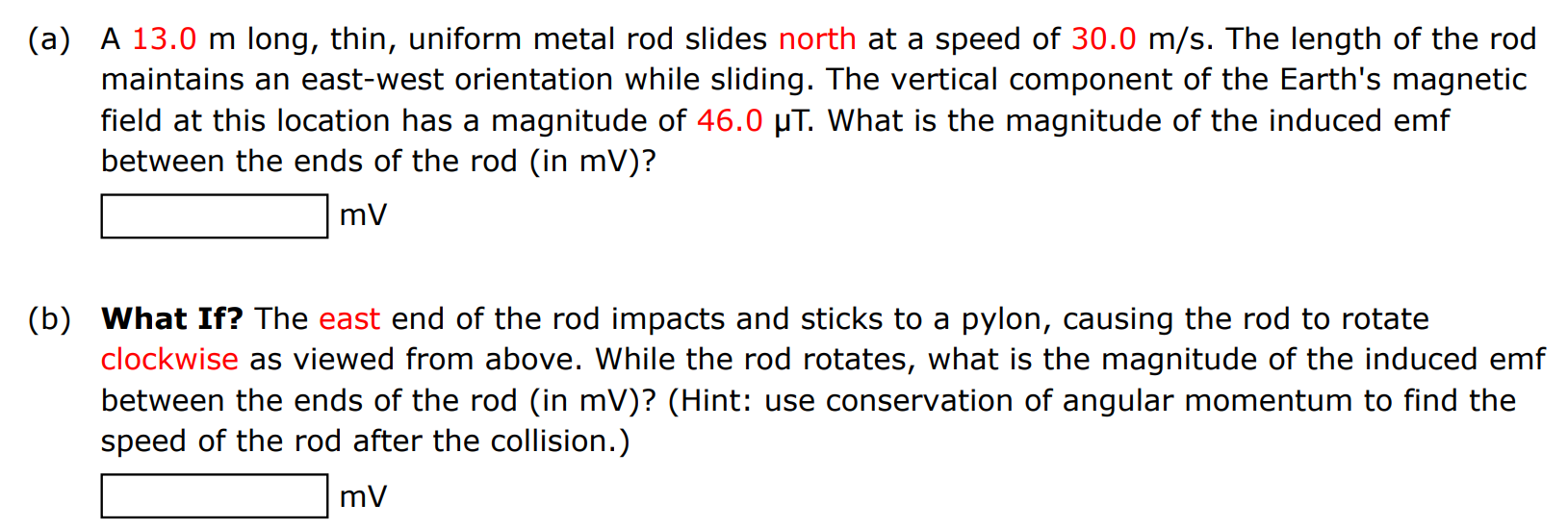(a) A 13.0 m long, thin, uniform metal rod slides north at a speed of 30.0 m/s. The length of the rod maintains an east-west orientation while sliding. The vertical component of the Earth's magnetic field at this location has a magnitude of 46.0 μT. What is the magnitude of the induced emf between the ends of the rod (in mV)? mV (b) What If? The east end of the rod impacts and sticks to a pylon, causing the rod to rotate clockwise as viewed from above. While the rod rotates, what is the magnitude of the induced emf between the ends of the rod (in mV)? (Hint: use conservation of angular momentum to find the speed of the rod after the collision.) mV
